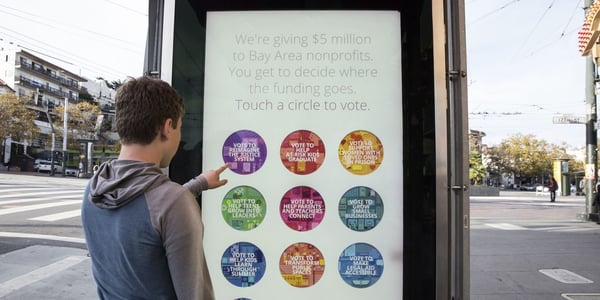Trending might be a buzzword you’re already sick of but that doesn’t make it any less important. If you can’t spot market trends and the direction your industry is moving, then you might soon be heading the same way as others who lacked foresight - just ask Blockbuster, MySpace and Kodak.
Don’t be a Blockbuster, be a Netflix by keeping an eye on these experiential marketing trends.

Do It for the Likes on Instagram
Social media rules our lives. We spend all day engaging with customers via Twitter and then go home and post pictures of our cat on Instagram. It’s an inescapable, unpredictable behemoth that can be the difference between success and oblivion.
It’s changing the way we market and driving experiences that are ‘shareable’ and perfectly designed to be ‘viral’. If your event or experience doesn’t have a dedicated hashtag, selfie stations and its fair share of influencers, then you just aren’t doing it right.
If you’re putting an experiential marketing campaign together, then you need to consider social media from beginning to end. Incorporate social and you’ll raise brand awareness, reach a new audience and make an impression with your consumers.
People Want to Smell and Taste Your Products for Some Reason
I mean, this is totally fine if you manufacture food goods. Less so if you’re a clothing or electronics brand. One of the key trends driving experiential marketing is the need for consumers to fully engage with your products - and that means with all five senses.
Our attention spans are pretty abysmal so it’s easy to forget a brand or new product among the cacophony of digital sights and sounds we see each day. Experiential marketing allows you to make more of a permanent impression. Even more so if you incorporate all five senses.
Remember, it’s not what you say to the customer - it’s how you make them feel.
Share a Coke With John
Your aim is to convince a consumer that you’re marketing just to them. All of the planning, strategy, implementation and work has been done to convince them, out of millions of possible customers, to buy your product.
This is achieved through personalisation. 49% of consumers say they’ve bought a product they had no intention of buying because it was personalised in some way. It’s not just as simple as writing someone’s name on the side though…
Although that’s exactly what Coke did. Their ‘Share a Coke’ campaign featured the iconic bottles and cans with different names on the side. Consumers eagerly searched for their own name and the campaign was a huge success. Simple as that really - unless you’re called Napoleon, Breeze or something else unique.
.jpeg?width=600&name=coke%20(1).jpeg)
Measure EVERYTHING
There’s a saying that ‘data is the new oil’. Harness relevant data in the right way and the possibilities are truly endless. During an experiential marketing campaign, it’s vital you have processes in place to capture a huge range of key metrics.
How many people interacted with the brand? What was the engagement performance on social media? Did sales receive a boost immediately during and afterwards? What did you learn? What can be improved next time?
Capture and analyse as much data as possible and use it to drive profitability and improve event ROI in the future. You’ll receive greater insight into your target consumer and you can use that information to make innovations that have a real impact.
Charity Makes Us Feel Good
Call us cynical, but the feeling of giving to charity is fantastic and part of the reason that many people do. Being generous makes us happy and that’s a key part of experiential marketing. If we can make a consumer happy, then they’re subconsciously forming a positive relationship with our brand.
Incorporate charity with your campaign to raise brand awareness and establish yourself as a company that cares. Take Google, for example. They didn’t especially need the boost in awareness when they asked the public for help with giving away $5.5 million to charity. But they did further establish themselves as a progressive and caring organisation.
The public could cast their votes for the charities that would receive the money. It was an interactive process that was a great experience for those that were involved. They were part of a huge charity event and felt fantastic doing it.
Remember, 72% of consumers positively view brands that provide great experiences. You don’t have to give away $5 million but the concept still applies.
Download Our Playbook
These are just some of the key trends that are changing the way marketers harness experiential marketing. It’s an evolving concept that delivers measurable positive results in terms of ROI and brand engagement.
For a more detailed look at experiential marketing and why your business is already falling behind by not doing it, download our playbook now. It won’t cost you a penny but it could be the start of huge growth opportunities for your business.
Click here.


